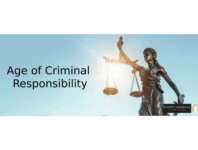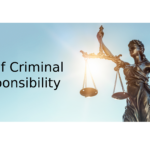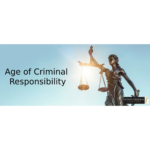NSW to Review Presumption that Children Cannot Be Guilty of Criminal Offences

The New South Wales Attorney-General has commissioned a review tasked with determining whether a legal doctrine – known as doli incapax – which presumes children aged between 10 and 14 years are incapable of forming the mental component of criminal offences, and cannot therefore be found guilty unless the prosecution proves otherwise – should be retained in its current form, reformed or replaced.
The review comes in the wake of a study which has found that conviction rates for children that fall within the doli incapax age-rage have significantly fallen since a 2016 decision of the High Court which established that prosecutors must prove beyond reasonable doubt the child knew their actions were “seriously wrong”.
Doli incapax and the age of criminal responsibility
The doctrine of doli incapax, which is Latin for ‘incapable of evil’, is a centuries-old legal presumption that children of a certain age lack the mental capacity to fully understand serious wrongdoing, and should not therefore be found guilty of criminal offences unless the prosecution proves otherwise.
This presumption can be distinguished from the ‘age of criminal responsibility’, which is the age at which a child is capable of being found guilty of a crime; in other words, a child cannot be found guilty under that age even if the prosecution were somehow able to prove the child knew their actions were seriously wrong.
The age of criminal responsibility in New South Wales as well as in Commonwealth law is 10 years, which means a child aged nine years or less cannot be guilty of a criminal offence.
The presumption of doli incapax in both New South Wales and Commonwealth law applies to children aged at least 10 but less than 14 years. While the presumption is contained in Commonwealth legislation – specifically section 7.2 of the Criminal Code Act 1995 – it is a common law rule in New South Wales, meaning it was developed by courts over time.
In order for a child aged between 10 and 14 to be found guilty of a crime in New South Wales – whether that be a state or federal crime – the prosecution must prove he or she knew the conduct in question was seriously wrong, rather than just naughty, wrong or mischievous.
Leading case
The leading authority on the common law doli incapax presumption relating children aged at least 10 but less than 14 years is the High Court case of RP v The Queen [2016] HCA 53.
The case involved accusations of sexual offences committed by a boy against his younger brother.
The four alleged sexual offences were said to be committed by the boy when he was aged between 11 years and six months and 12 years and three months.
The initial proceedings were tried by a judge-alone in the District Court of New South Wales, who acquitted the boy of one charge but convicted him of the remaining three.
The issue before the panel of five High Court justices was whether the prosecution had rebutted the common law presumption of doli incapax in relation to the accused boy.
The leading judgement of four of the justices in that case clarified that:
- The common law presumption of doli incapax applies to children aged at least 10 and less than 14 years,
- The presumption is based on the notion that ‘a child aged under 14 years is not sufficiently intellectually and morally developed to appreciate the difference between right and wrong and thus lacks the capacity for mens rea’ (at para 8). ‘Mens rea’ means ‘guilty mind’ and denotes the mental element required to establish an offence,
- Doli incapax presumes a child under the age of 14 does not know his or her actions are ‘seriously wrong’,
- It follows that the cannot be held criminally responsible for his or her actions,
- It is a rebuttable presumption,
- The prosecution bears the legal onus of rebutting the presumption,
- The standard of proof required for the prosecution to rebut the presumption is beyond reasonable doubt,
- ‘[T]he presumption may be rebutted by evidence that the child knew that it was morally wrong to engage in the conduct that constitutes the physical element or elements of the offence’ (at para 9),
- ‘Knowledge of the moral wrongness of an act or omission is to be distinguished from the child’s awareness that his or her conduct is merely naughty or mischievous’ (at para 9),
- ‘This distinction… [between moral wrongness and naughty or mischievous] may be captured by stating the requirement in terms of proof that the child knew the conduct was “seriously wrong” or “gravely wrong”’ (at para 9), and
- ‘No matter how obviously wrong the act or acts constituting the offence may be, the presumption cannot be rebutted merely as an inference from the doing of that act or those acts’ (at para 9).
Applying those principles to the facts of the case before it, the highest court in the land upheld the boy’s appeal, set aside the convictions against him and entered verdicts of acquittal in their place.
Fall in conviction rates
RP v The Queen provides important guidance on the core principles of the presumption of doli incapax, sets a high bar for its rebuttal, and signalled a fall in convictions rates relating to children that fall within its parameters.
In that regard, a study by the NSW Bureau of Crime Statistics and Research (BOCSAR) in May 2025 found, among other things, that:
- Findings of guilt (also known as ‘proven outcomes’ in the NSW Children’s Court dropped from 76% in 2015–16 to just 16% in 2022–23, and
- More than half of cases involving 10–13-year-olds were withdrawn by the prosecution in 2022–23.
The NSW Government’s review: what’s on the table
The fall sparked community concern and contributed to a decision by NSW Attorney-General Michael Daley to commission a review on the presumption.
That review, led by Geoffrey Bellew SC and Jeffrey Loy, proposes to determine whether doli incapax should be retained in its current, reformed or replaced.
The review will consider:
- Practical application: How prosecutors and courts currently interpret and apply doli incapax, and its impact on justice outcomes.
- Legislative codification: Whether NSW should enshrine doli incapax in statute, as some states already have.
- Possible modification or removal:
- Narrowing or removing the presumption
- Adjusting the evidentiary burden
- Raising or altering the age of responsibility
- Youth justice pathways: Expanding diversionary and rehabilitative responses rather than prosecution.
- Equity and overrepresentation: Assessing impacts on Aboriginal children and other disproportionately affected groups.
Comparative table: Doli incapax and age of criminal responsibility across Australia
| Jurisdiction | Minimum Age of Criminal Responsibility | Doli incapax Age Range | Status of the Doctrine | Notes / Current Developments |
| New South Wales (NSW) | 10 | 10–13 | Common law (not codified) | Under review in 2025; possible codification or reform. |
| Victoria | 10 | 10–13 | Common law | Govt announced intention to raise age to 12 (then to 14 by 2027). |
| Queensland | 10 | 10–13 | Codified in Criminal Code (Qld) s29 | Requires proof child knew act was seriously wrong. |
| Western Australia (WA) | 10 | 10–13 | Codified in Criminal Code (WA) s29 | Similar test as Qld; calls to raise age ongoing. |
| South Australia (SA) | 10 | 10–13 | Common law | Discussion on reform but no legislation yet. |
| Tasmania | 10 | 10–13 | Common law | Advocates push for raising age to 14. |
| Australian Capital Territory (ACT) | 12 (legislated, 2023) | N/A | Doctrine effectively superseded | ACT raised age to 12 in 2023, with plan to increase to 14. |
| Northern Territory (NT) | 10 | 10–13 | Codified in Criminal Code (NT) s38 | Govt considering reform following national review. |
Arguments for and against reform
Arguments for change
- Improved accountability: Critics argue the doctrine prevents prosecution even in serious cases.
- Legal clarity: Codification could simplify and standardise how the law is applied.
- Public confidence: Reform may align justice outcomes with community expectations.
- Holistic response: The review could integrate early intervention with law reform.
Concerns and criticisms
- Child protection: The doctrine safeguards children’s developmental limitations. Weakening it risks criminalising those who cannot yet fully comprehend right and wrong.
- Disproportionate impact: Aboriginal and disadvantaged children could be most affected by harsher laws.
- Risk of “net-widening”: More children entering the justice system could increase incarceration rates without reducing offending.
- Evidence gap: Lower conviction rates may reflect appropriate discretion, not system failure.
What possible reforms might look like
- Age adjustments: Raising the lower age to 12 or 14, or changing the doli incapax range.
- Burden of proof shifts: Making it easier (or harder) for the prosecution to rebut the presumption.
- Tiered model: Different standards for serious vs. minor offences.
- Mandatory diversion: Requiring education or community programs before prosecution.
- Equity safeguards: Statutory reviews, oversight, and cultural safety mechanisms.
The broader picture
Australia’s approach to child criminal responsibility is increasingly under global scrutiny. International children’s rights bodies—including the UN Committee on the Rights of the Child—recommend a minimum age of at least 14.
The NSW review will need to navigate competing pressures: community calls for accountability, legal principles protecting children’s moral development, and the imperative to reduce Aboriginal overrepresentation in custody.
The doli incapax review marks a pivotal moment in NSW’s youth justice reform. The outcome could redefine what it means to hold a child accountable under Australian law—balancing societal safety with the fundamental question of when, and how, a child truly understands the weight of wrongdoing.
Whether the result is codification, amendment, or full repeal, the reform will shape how NSW (and likely other states) view the intersection of childhood, capacity, and culpability for years to come.






